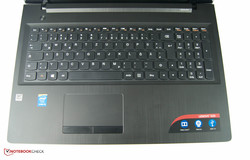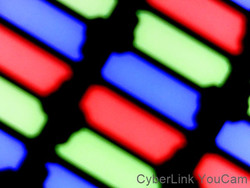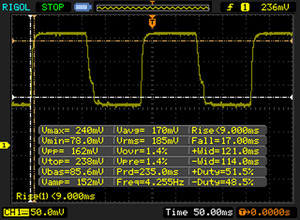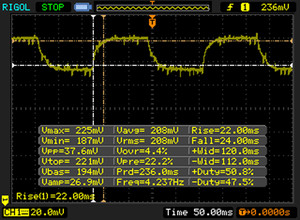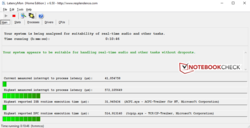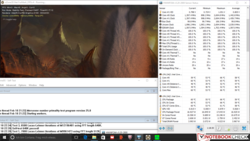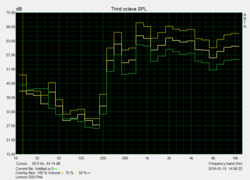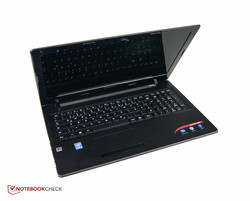Lenovo G50-80 Notebook Review

For the original German review, see here.
Lenovo's G50-series is designed to handle all the tasks a user might encounter on a daily basis. The models in the series start at under 300 Euro (~$330), although at this price point they are equipped with hardware from AMD. Our 15.6-inch review notebook is more upscale and comes with Core i5 processor, 8 GB of RAM, and a 1TB SSHD. At the time of writing, this configuration sells for 615 Euro (~$675). A model with half the storage and RAM sells for 15 Euro (~$16.50) less. On their website, Lenovo references other versions with Intel Core i7 CPU and BluRay optical drive, but these models weren't available for purchase in the online store at the time of our check. The competition in the realm of entry-level notebooks such as this one is pretty extensive, so we'll compare the review candidate to other notebooks like the Medion Akoya E6418.
Case & Connectivity
The chassis is made entirely out of plastic. Except for the lid, all surfaces feature a matte finish. The smooth and glossy display lid sparkles slightly and is very susceptible to fingerprints. Another drawback: the back of the display yields to pressure rather easily.
Closer examination reveals a lot of edges and sharp corners but the build quality is solid overall. We don't think the chassis would survive drops, however.
The two display hinges don't seem to be quite sturdy enough. They move effortlessly, but unfortunately can't prevent the display from bouncing.
At a weight of 2.3 kg and a height of 2.5 cm, the notebook isn't a high-end slim-and-light, but slipping the G50 into a bag doesn't pose a problem.
In addition to a large maintenance hatch, the battery features a rather simple removal mechanism. The maintenance cover features a simple screw mechanism as well.
Input Devices
Visually, the keyboard looks familiar, since Lenovo uses the same design for other notebooks (for example the IdealPad G50-70). The size of the keys is ideal and the surface slightly rough to the touch. Because the key travel is rather short and the feedback on the soft side, faster inputs in particular feel a little spongy. For occasional word processing and similar tasks the keyboard is definitely sufficient, however. A drawback remains: the keyboard yields to pressure easily towards the middle.
The touchpad is adequately sized at 10.1 x 5.4 cm and translates inputs without a hitch. Multi-touch gestures are recognized well most of the time. A problem area are the corners, since finger movements aren't always interpreted correctly. The mouse buttons feature soft feedback and long travel.
Display
Unfortunately, the matte display panel is based on inexpensive TN technology with limited viewing angle stability and an HD resolution of 1366 x 768 pixels. Colors and brightness suffer when the user moves his or her head. The brightness could be higher as well - we measured an average of 224.8 cd/m². Lenovo doesn't offer an alternative panel. The contrast of 466:1 and a black value of 0.47 cd/m² are not quite good enough to display solid blacks. The Medion Akoya E6418 features an average brightness of Test Aldi/Medion Akoya E6418 Notebook230 cd/m², which isn't much better, but makes use of a high-end IPS Full-HD panel instead. Combined with a black value of 0.25 cd/m² and a corresponding contrast ratio of 948:1, the competing notebook is an interesting alternative.
| |||||||||||||||||||||||||
Brightness Distribution: 89 %
Center on Battery: 178 cd/m²
Contrast: 466:1 (Black: 0.47 cd/m²)
ΔE ColorChecker Calman: 12.25 | ∀{0.5-29.43 Ø4.78}
ΔE Greyscale Calman: 13.19 | ∀{0.09-98 Ø5}
62% sRGB (Argyll 1.6.3 3D)
39% AdobeRGB 1998 (Argyll 1.6.3 3D)
42.29% AdobeRGB 1998 (Argyll 3D)
61.6% sRGB (Argyll 3D)
40.94% Display P3 (Argyll 3D)
Gamma: 2.31
CCT: 14272 K
| Lenovo G50-80 80E5039SGE Iris Graphics 6100, 5257U, Seagate ST1000LM014 Solid State Hybrid Drive | Medion Akoya E6418-MD99620 Iris Graphics 6100, 5257U, Phison 128GB PS3109-S9 | Acer Aspire ES1-521-87DN Radeon R5 (Beema/Carrizo-L), A8-6410, Western Digital Scorpio Blue WD5000LPVX | Asus ASUSPRO Essential P2520LA-XO0167H HD Graphics 5500, 5200U, Hitachi Travelstar Z7K500 HTS725050A7E630 | |
|---|---|---|---|---|
| Display | -5% | -3% | -6% | |
| Display P3 Coverage (%) | 40.94 | 38.96 -5% | 39.83 -3% | 38.55 -6% |
| sRGB Coverage (%) | 61.6 | 58.5 -5% | 59.5 -3% | 57.8 -6% |
| AdobeRGB 1998 Coverage (%) | 42.29 | 40.25 -5% | 41.19 -3% | 39.84 -6% |
| Response Times | 46% | -1% | -2% | |
| Response Time Grey 50% / Grey 80% * (ms) | 46 ? | 9 ? 80% | 47 ? -2% | 48 ? -4% |
| Response Time Black / White * (ms) | 26 ? | 23 ? 12% | 26 ? -0% | 26 ? -0% |
| PWM Frequency (Hz) | 50 ? | 1000 ? | 198 ? | |
| Screen | 29% | 8% | 5% | |
| Brightness middle (cd/m²) | 219 | 237 8% | 245 12% | 228 4% |
| Brightness (cd/m²) | 225 | 230 2% | 238 6% | 220 -2% |
| Brightness Distribution (%) | 89 | 80 -10% | 88 -1% | 85 -4% |
| Black Level * (cd/m²) | 0.47 | 0.25 47% | 0.42 11% | 0.42 11% |
| Contrast (:1) | 466 | 948 103% | 583 25% | 543 17% |
| Colorchecker dE 2000 * | 12.25 | 5.52 55% | 10.49 14% | 10.22 17% |
| Greyscale dE 2000 * | 13.19 | 4.7 64% | 11.47 13% | 11.08 16% |
| Gamma | 2.31 95% | 2.41 91% | 2.52 87% | 2.46 89% |
| CCT | 14272 46% | 7230 90% | 13286 49% | 12762 51% |
| Color Space (Percent of AdobeRGB 1998) (%) | 39 | 37 -5% | 38 -3% | 37 -5% |
| Color Space (Percent of sRGB) (%) | 62 | 58 -6% | 60 -3% | 58 -6% |
| Colorchecker dE 2000 max. * | 16.84 | |||
| Total Average (Program / Settings) | 23% /
24% | 1% /
5% | -1% /
2% |
* ... smaller is better
Display Response Times
| ↔ Response Time Black to White | ||
|---|---|---|
| 26 ms ... rise ↗ and fall ↘ combined | ↗ 9 ms rise | |
| ↘ 17 ms fall | ||
| The screen shows relatively slow response rates in our tests and may be too slow for gamers. In comparison, all tested devices range from 0.1 (minimum) to 240 (maximum) ms. » 61 % of all devices are better. This means that the measured response time is worse than the average of all tested devices (20.2 ms). | ||
| ↔ Response Time 50% Grey to 80% Grey | ||
| 46 ms ... rise ↗ and fall ↘ combined | ↗ 22 ms rise | |
| ↘ 24 ms fall | ||
| The screen shows slow response rates in our tests and will be unsatisfactory for gamers. In comparison, all tested devices range from 0.165 (minimum) to 636 (maximum) ms. » 78 % of all devices are better. This means that the measured response time is worse than the average of all tested devices (31.6 ms). | ||
Screen Flickering / PWM (Pulse-Width Modulation)
| Screen flickering / PWM not detected | ||
In comparison: 53 % of all tested devices do not use PWM to dim the display. If PWM was detected, an average of 8111 (minimum: 5 - maximum: 343500) Hz was measured. | ||
Next we take a look at the output of the CalMAN software. Subjectively, the panel of the review notebook exhibits a distinctly bluish hue and the measured DeltaE-deviations for colors (12,25) and graylevels (13,19) are far from great - something to be expected considering this is an inexpensive TN panel.
Outdoor suitability is limited in two ways: firstly, because the brightness isn't very high and secondly, because the display is highly reflective. For this reason, we only recommend using the G50-80 in the shade.
Performance
Hardware-wise, Lenovo has the basics covered for multimedia and office applications. The Intel i5 processor is supported by 8 GB of DDR3 RAM running in dual-channel mode. Data finds its home on the 1 TB SSHD. As we mentioned earlier, not all of the (supposedly available) versions of the notebook can be purchased in Lenovo's online store.
Processor
The Broadwell-generation Intel Core i5-5257U is designed for a lower power consumption with a TDP of 28 watts according to Intel's spec sheet. Even fairly demanding programs and multitasking should not pose a problem. The two cores operate at 2.7 GHz but can be overclocked to up to 3.1 GHz via the Turbo. We use the Cinebench R15 benchmark to check the efficiency of the CPU and its performance under load. During the test, the CPU is not able to operate at the Turbo-induced maximum. After a few seconds, the clock speed drops to 2.7 GHz with the CPU stabilizing at 2.8 GHz after a while. The Medion Akoya E6418 does better here even though it contains the same processor. Operating the notebook on battery power results in a significant performance drop down to 200 points. The culprit is the clock speed: the CPU now operates between 1800 and 2000 MHz.
System Performance
Working with the G50 is a fairly smooth experience thanks to the choice of hardware components. The SSHD allows for quicker reaction times compared to a regular HDD, although the 8 GB of integrated SSD cache can't compete with a real SSD. Our review notebook does well running the PCMark 8 Home benchmark and the results are similar to those of the predecessor.
| PCMark 8 - Home Score Accelerated v2 (sort by value) | |
| Lenovo G50-80 80E5039SGE | |
| Medion Akoya E6418-MD99620 | |
| PCMark 7 Score | 4259 points | |
| PCMark 8 Home Score Accelerated v2 | 3364 points | |
Help | ||
Storage Devices
Lenovo uses a 1 TB SSHD drive with 8 GB of SSD cache. The transfer rates are similar to other 5400 RPM drives. The Medion Akoya E6418 with its 128 GB SSD is quite a bit faster as far as the important 4K read and write rates are concerned.
GPU Performance
For graphics duties, Lenovo relies on the processor-integrated Intel Iris Graphics 6100. The Broadwell-generation GPU should be sufficient for normal multimedia tasks and can even handle some older games. The results of the 3DMark 11 benchmark trail those of the Medion Akoya E6418, which features the same hardware. The picture was reversed when we ran 3DMark Ice Storm, however.
Unlike the processor, the GPU maintains its peak performance even when the notebook is used away from any outlets.
For further comparisons with the Intel GPU please check our comparison of current notebook graphics cards.
| 3DMark 11 - 1280x720 Performance (sort by value) | |
| Lenovo G50-80 80E5039SGE | |
| Medion Akoya E6418-MD99620 | |
| Apple MacBook Pro Retina 13 inch 2015-03 | |
| 3DMark 11 Performance | 1581 points | |
| 3DMark Ice Storm Standard Score | 60813 points | |
| 3DMark Cloud Gate Standard Score | 5881 points | |
| 3DMark Fire Strike Score | 829 points | |
Help | ||
Gaming Performance
At least FIFA-sessions won't fall through, since the game remains playable even at high settings. Most titles released in the last few years require low settings to remain stutter-free, however. For details about those titles please check our article on laptop graphics cards and gaming performance.
| FIFA 16 - 1366x768 High Preset AA:2x MS (sort by value) | |
| Lenovo G50-80 80E5039SGE | |
| Medion Akoya E6418-MD99620 | |
| low | med. | high | ultra | |
|---|---|---|---|---|
| FIFA 16 (2015) | 51.2 | 37.1 | ||
| Anno 2205 (2015) | 28.9 | 15.8 | ||
| Rise of the Tomb Raider (2016) | 9.7 | |||
| XCOM 2 (2016) | 13.1 |
Emissions & Energy
System Noise
The integrated fan remains unobtrusive during both idle and load scenarios. Even during the 3D benchmark tests, the notebook remained very quiet. We recorded a maximum noise level of 34.5 dB. The Medion Akoya E6418 isn't much louder though at 40 dB.
Noise level
| Idle |
| 32.2 / 32.3 / 32.3 dB(A) |
| HDD |
| 32.2 dB(A) |
| DVD |
| 35.5 / dB(A) |
| Load |
| 34.5 / 34.5 dB(A) |
 | ||
30 dB silent 40 dB(A) audible 50 dB(A) loud |
||
min: | ||
Temperature
Positive as well: the G50 is not only behaves well as far as the noise level is concerned, but the temperatures are well-controlled as well. The plastic chassis remains below 23 °C during idle and doesn't get any hotter than 35.8 °C under load.
Next we took a look at what's happening inside. To subject our review notebooks to maximum load levels, we use the tools Prime95 and FurMark. At the start of the test, the CPU cores throttled down to between 1.4 - 1.5 GHz and remained there for the duration of the test. The average recorded processor-temperature remained low at only about 56 °C.
(+) The maximum temperature on the upper side is 35.9 °C / 97 F, compared to the average of 36.9 °C / 98 F, ranging from 21.1 to 71 °C for the class Multimedia.
(+) The bottom heats up to a maximum of 35.8 °C / 96 F, compared to the average of 39.2 °C / 103 F
(+) In idle usage, the average temperature for the upper side is 22.5 °C / 73 F, compared to the device average of 31.3 °C / 88 F.
(+) The palmrests and touchpad are reaching skin temperature as a maximum (34.5 °C / 94.1 F) and are therefore not hot.
(-) The average temperature of the palmrest area of similar devices was 28.7 °C / 83.7 F (-5.8 °C / -10.4 F).
Speakers
Power Consumption
The fairly frugal processor positively impacts the power consumption. During idle, the review notebook required between 6.3 and 8.5 watts; power draw under load was up to 33 watts. The competing notebook requires up to 12.5 watts more. The explanation: the G50 throttles under load, so the CPU never draws as much as it theoretically could.
Standby requires 0.48 watts, which is about twice as much as when the notebook is turned off completely (0.25 watts).
| Off / Standby | |
| Idle | |
| Load |
|
Key:
min: | |
Battery Life
The G50-80 is equipped with a four-cell battery with a capacity of 31.7 Wh. To get an idea of the practically relevant battery life, we check the run time while running a browser test. The review notebook shut down after a tad over three hours. The Medion Akoya, on the other hand, lasted about 1.5 hours longer.
| Battery Runtime - WiFi Websurfing (sort by value) | |
| Lenovo G50-80 80E5039SGE | |
| Medion Akoya E6418-MD99620 | |
Pros
Cons
Verdict
New, but an old acquaintance: Lenovo's G50-80 features a previous-generation chassis. Aside from a few minor flaws surrounding the build quality, the overall impression is a good one. The TN panel isn't exactly a standout feature, though: the competitor Medion Akoya ships with a higher-end IPS panel for the same price.
The notebook does well as far as the system performance is concerned. The G50 handles all daily tasks well and the components still have some power to spare. Emissions are outstanding, but the battery life is pretty modest. Once again, the Medion Akoya outperforms the Lenovo offering here.
The Lenovo G50 might have some weaknesses, but the notebook is still well-equipped to handle various multimedia tasks.
We also recommend taking a look at the Medion Akoya E6418 - which retails for the same price - or the more powerful version of the G50, which sells for about 15 Euro (~$16.50) more.
Lenovo G50-80 80E5039SGE
- 02/11/2016 v4.1 (old)
Nino Ricchizzi






